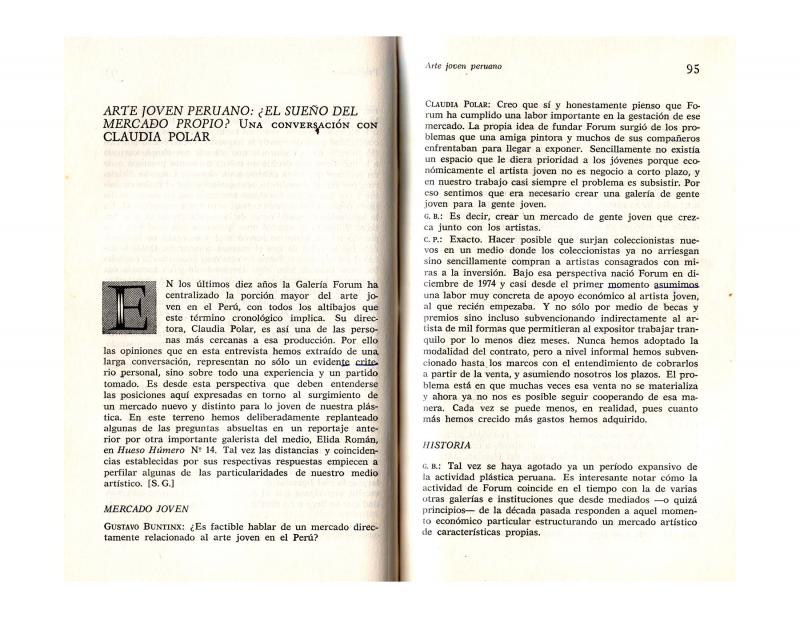Gustavo Buntinx (b. 1956), the critic, art historian, and freelance curator, has produced exhibitions and published his writings in several countries. His work mainly addresses contemporary matters and subjects related to colonial and republican visual art. He is the head of the Micromuseo project (there’s room in the back). His professional duties involve exploring the relationships between art and violence, art and politics, and art and religion. In the 1980s, he published widely in the Peruvian media, signing his critical articles with the pseudonym “Sebastián Gris.”
This article is required reading on the subject of Peruvian art produced from the 1960s to the early 1980s. On the whole, its focus fluctuates between popular or traditional art and erudite or high art. Buntinx’s later theory posits the existence of a “friction” between these two categories where he detects a rich vein of inspiration that could fuel a new perspective in the Peruvian visual arts. This article appeared in the eighteenth issue of Hueso Húmero, a magazine that was wholly devoted to Peruvian art produced during the period 1960 to 1980 and included numerous contributions from a variety of specialists, critics, and theorists. This “arts and letters magazine” was one of the most influential publications in Peru due to its extensive coverage of artistic and literary works and criticism. According to the author, the date mentioned in the document––1983––is at odds with the facts concerning the eighteenth issue of Hueso Húmero. Number eighteen was in fact published a year later (1984), as shown by references in the magazine articles to situations that took place after July through September 1983.
[See the following articles by Buntinx in the ICAA digital archive: “Arte joven peruano: ¿El sueño del mercado propio? Una conversación con Claudia Polar” (doc. no. 1146565) and “Está naciendo algo... una entrevista con Mirko Lauer” (doc. no. 1136477)].


